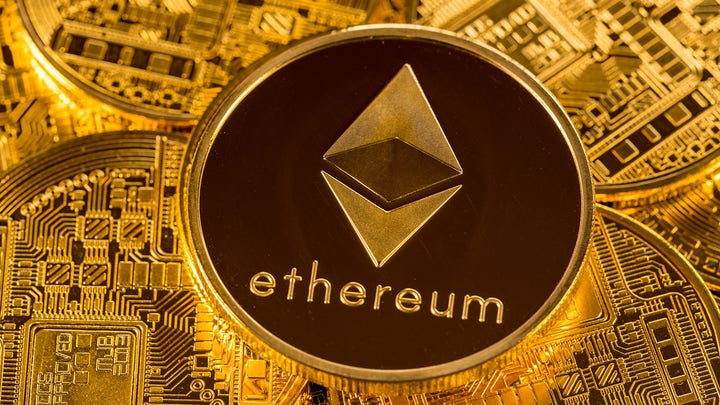
NFTs are growing in popularity. Tokens are currently viewed as cryptographic tokens and digital collectibles by users who are interested in non-fungible tokens. Digital content will be created, distributed, and consumed differently in the near future thanks to NFTs. Several DRM (Digital Rights Management) use cases will be included in the enterprise use cases of NFTs.
By understanding NFTs and the token standards that underlie this phenomenon, users can better understand the nuances of each type of NFT, as well as the various blockchain protocols involved. Many consumer applications are built on top of Ethereum’s ERC721 standard since it was the first NFT standard available. The users and artists who mint or create NFTs through third-party websites sometimes don’t know what token standard or blockchain they are using to issue their new NFT.
Ethereum Blockchain
The original non-fungible token standard was the ERC721 built on Ethereum. Ethereum was the pioneer in this space and is still the most widely used blockchain platform for creating and launching NFTs. The Flow and Tezos blockchain protocols, however, are catching up fast and will likely surpass Ethereum in the near future.
Transactions on all blockchain platforms have an associated cost with them, usually a negligible amount. The transactions on Ethereum are processed in ‘gas’. When Ethereum was created gas was linked to the price of ETH on the open market, the founders didn’t expect the price of ETH to rise to the point where it became prohibitive to transact on the platform. As of this writing, it costs over $80 to mint an NFT using the ERC721 standard on Ethereum.
Ethereum’s native language is Solidity. Ethereum also started with the proof of work consensus mechanism and plans to switch to the proof of stake consensus mechanism.
If you want to read more about Flow Vs Ethereum gas fees and which perform better you can read more HERE
ERC 721 Standard
The most commonly used token standard that started everything. ERC721 tokens are non-fungible; each token is unique and can be priced independently. This is why unique digital assets such as an artist’s digital art creation can be stored on such a token. Each token is unique and cannot be destroyed or duplicated. Each token can be thought of as a collectible based on the uniqueness and rarity of its properties. This was the first non-fungible token standard to be created.
ERC 998 & ERC 1155 Standards
Two notable non-fungible token standards on Ethereum which aren’t as commonly used as the ERC721 standard are the ERC998 and the ERC1155 standards.
ERC998 tokens are similar to ERC721 tokens in that they are both non-fungible. ERC998 tokens are also ‘composable’, which means that assets within this type of token can be composed or organized into complex positions and traded using a single transfer of ownership.
An ERC998 Token can hold both unique non-fungible tokens (such as the ERC721), as well as uniform fungible tokens (such as the ERC20). The ERC 998 token can then be valued and traded. Since the ERC998 token can own a unique set of digital assets, it can be thought of as a portfolio of assets or as a holding company for a diverse set of assets.
ERC1155 tokens allow for users to register fungible (ERC20) and non-fungible (ERC721) tokens using the same address and smart contract. This token standard was developed with games in mind where fungible tokens could represent a transactional currency in a game and the non-fungible items could represent in-game collectibles and in-game exchangeable assets.
Many other token standards such as the ERC 1190 that offer flexible and complex NFTs to be created have been proposed and are waiting to be approved by Ethereum’s governing committee.
Flow Blockchain
To understand Flow we need to start with Cryptokitties. Cryptokitties is an NFT based game that allows users to buy, sell, collect and breed digital cats. It was launched using ERC721 tokens. It became so popular that it clogged the Ethereum blockchain network.
The team behind the game (Dapper Labs) set out to solve this problem and in the process created Flow; a blockchain that was designed with crypto-collectibles and games in mind. Dapper Labs also created NBA Top Shot – which is a very popular NFT based digital collectibles platform. Flow uses the proof of stake consensus mechanism.
Flow-NFT Standard
Smart contracts on the Flow network are written in Cadence; Flow’s language. Flow allows for “Upgradeable Smart Contractsâ€, ie. smart contracts which can be deployed in a ‘beta state’ and then be incrementally updated by the original authors until they are satisfied.
Users will be notified that this smart contract isn’t finalized yet and can choose to wait until it is completed before trusting it. Once the original authors of the smart contract are satisfied with their code they can irrevocably release control and it becomes immutable from that point forward. Flow has been designed for scale.
Tezos Blockchain
Tezos is a decentralized blockchain that uses the liquid-proof stake consensus mechanism. Tezos has a native cryptocurrency called Tez. The creators of the platform recognize that transaction fees need to be low for wide adoption and ease of use. Tezos has three primary token standards of which only the FA2 is non-fungible.
FA2 Standard
The FA2 token standard, also known as the TZIP-12, is a unified token contract interface that supports a wide range of token types such as fungible, non-fungible, non-transferable as well as multi-asset contracts.
It gives developers a lot of flexibility to define and invent new token types which can support complex token interactions while maintaining a standard API for external applications and wallets. These token structures can include NFTs and contain numerous different gaming items with interactive and transmutable features.
Conclusion
Ethereum was the first blockchain platform to have NFT capabilities, but it wasn’t built specifically for NFTs. The NFT first approach is reflected in platforms like Flow and Tezos. In the near future, there will be more NFT standards to choose from.
NFTs will power the next generation of games and media applications, as well as digital identity, healthcare and insurance applications. When choosing a platform and token standard, it is vital to understand the intricacies, nuances, and transaction fees of each alternative.
Flow has a really strong foundation and is built to scale. For this reason, we have seen big companies investing in to dapper labs
If you want to read more about Flow Vs Ethereum gas fees and which perform better you can read more HERE
Originally published HERE
